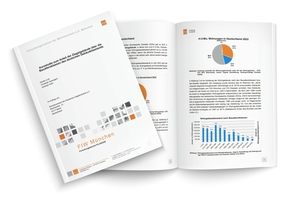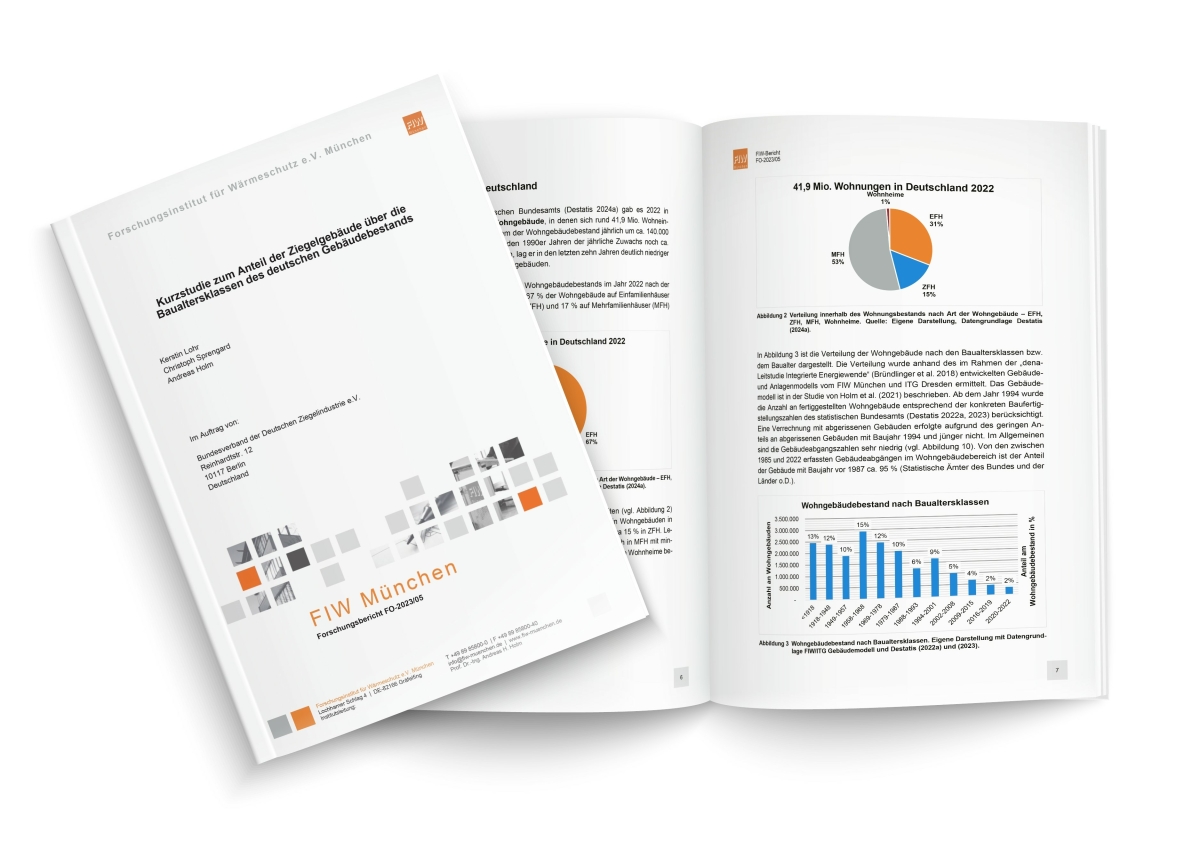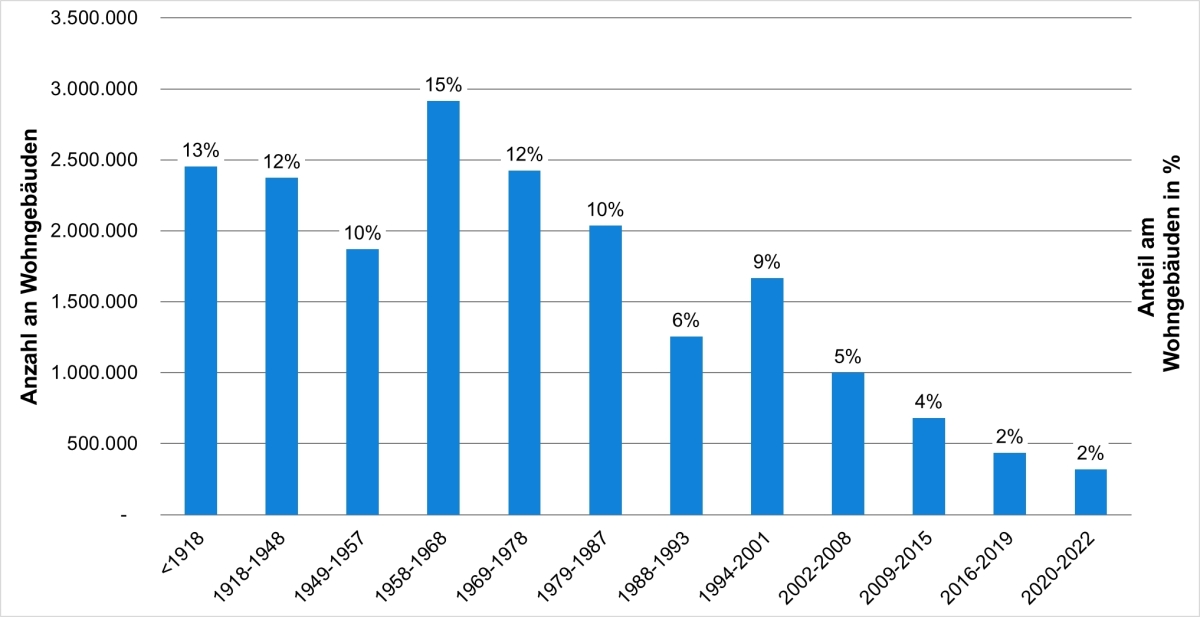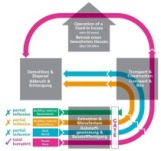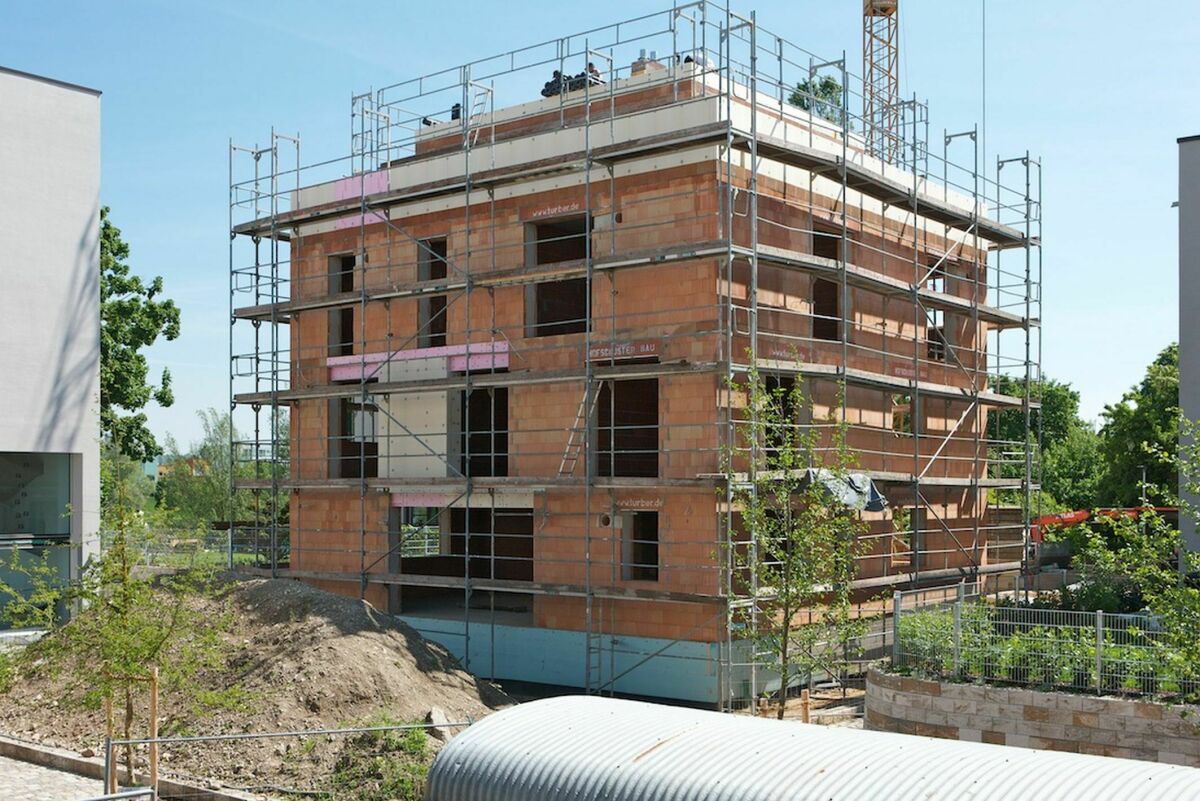Brick construction lasts for centuries
18.03.2024In recent years, discussions about the life cycle assessment of buildings have become increasingly important. A central question here is the appropriate period of consideration, particularly with regard to long-lasting building materials such as bricks. In order to address this issue in a well-founded manner, the Federal Association of the German Brick and Tile Industry (BVZi) commissioned the Research Institute for Thermal Insulation in Munich (FIW) to carry out a statistical analysis of the current German building stock.
Study proves: German residential buildings predominantly made of brick
The aim of the study was to analyse statistical data to determine which building materials make up the German building stock of the last century. The study is based on the statistical collection and evaluation of data on the materials used in the load-bearing exterior wall constructions of residential buildings over a period of time as far back in the past as possible.
For the first time, the study has provided a comprehensive picture of the construction methods used in German residential buildings. It shows that over two thirds of the German housing stock older than 50 years was built using brick construction. The older the buildings are, the higher the proportion of brick buildings compared to other construction methods.
Bricks in the life cycle analysis
Despite the fundamental knowledge about the durability and longevity of bricks, the fired building material is often underestimated in current analyses, especially with regard to the life cycle assessment over the entire building life cycle. This is demonstrated by the current table of the Federal Institute for Research on Building, Urban Affairs and Spatial Development (BBSR), which shows service lives of building components for life cycle analyses according to the BNB (Assessment System for Sustainable Building) with a maximum of >50 years for solid exterior walls. The resulting data forms the basis for the life cycle assessment of the various sustainability certification systems and the Quality Seal for Sustainable Buildings (QNG).
However, numerous historical buildings from past centuries show that solid construction methods can have a significantly longer service life if they are maintained accordingly. This FIW study supports this empirical finding and confirms that around a quarter of German residential buildings over 70 years old are largely made of masonry bricks. Similarly, the proportion of residential buildings over 50 but less than 70 years old is around 25 per cent, almost half of which are made of brick masonry. In a nutshell, this means that more than two thirds of all German residential buildings were built more than 50 years ago and the majority of them are made of brick.
Data as a basis for the circular economy
The data provides important clues in the debate about sustainable building materials. The longer a building can be used, the more resource-efficient it is. It therefore seems sensible to continue analysing the Federal Statistical Office's recording of building completions and building permits according to the building material used, especially as the importance of buildings as raw material stores is growing in the context of the circular economy. The introduction of nationwide building resource passports is another important instrument for verifying the data for existing buildings and can provide the right impetus for sustainable and circular construction.
In view of their proven longevity, it is logical to emphasise the importance of brick products as a building material for residential buildings and to take this into account appropriately in ecological life cycle analyses. In this way, an important contribution can continue to be made to the creation of affordable living space.
For Attila Gerhäuser, Managing Director of the BVZi, the study reveals the following: "A look at the composition of the German building stock shows that there are millions of examples of the longevity of brick buildings. This fact must also be taken into account politically by considering the above-average service life - 150 years and more for brick products - in the further development of ecological assessment."

